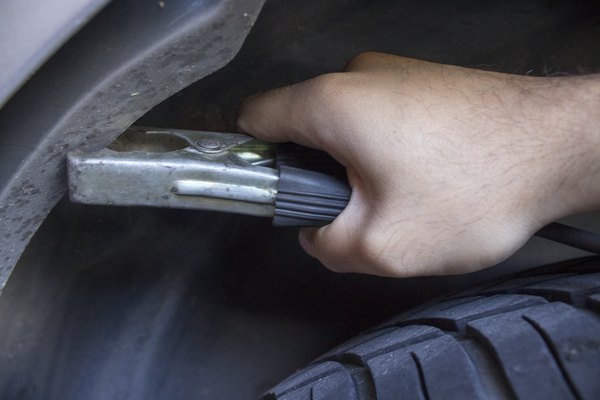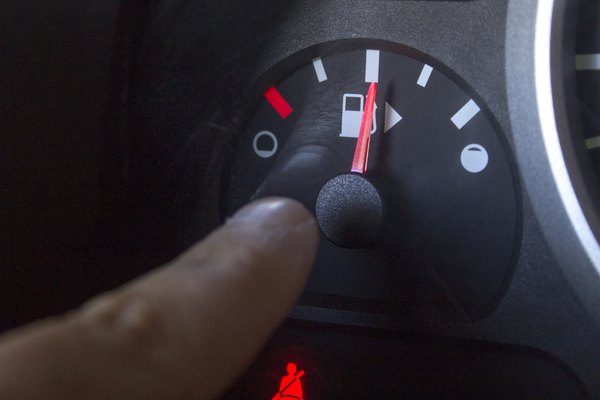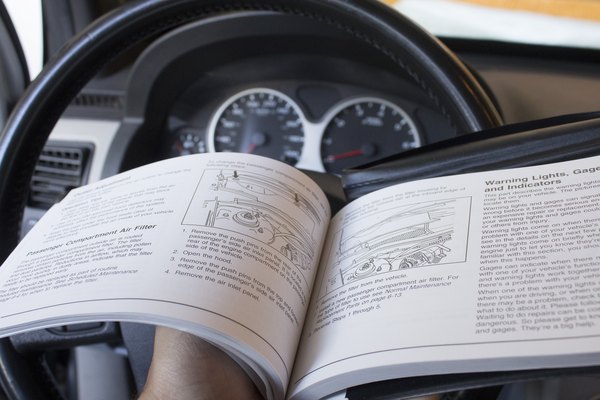How to Fix a Stuck Fuel Gauge
by Dwight MaloneUpdated August 03, 2023
Turn the ignition on and off a few times, and watch the needle on the fuel gauge to see if it moves. If it doesn't, you most likely have a blown fuse that needs to be replaced. The fuse box will either be located under the driver's side dash or in the engine compartment, so consult your owners manual to pinpoint the location so you can replace the fuse.

Test the grounding wire on the fuel tank's sending unit, which is attached to your vehicle's fuel tank. To do so, attach the negative jumper cable to the car's frame, and the positive jumper cable to the grounding terminal of the sending unit. If the fuel gauge works when the jumper cables are connected, then the grounding wire on the sending unit needs to be replaced.

Disconnect the wiring attached to the fuel sending unit and then look at the fuel gauge. If the gauge is now giving you an empty reading, the fuel gauge is faulty and should be replaced. If the gauge gives you a full reading, the sending unit is faulty and should be replaced.

Verify that all of the wiring is securely connected to the back of the fuel gauge, which will require you to remove the dashboard to gain access to the instrument cluster. The process for doing this varies from vehicle to vehicle, so consult your owners manual.

Check the grounding wire on the fuel gauge. To do so, connect the negative jumper cable to the vehicle's frame and the positive cable to the fuel gauge's grounding terminal. Turn the ignition to the on position and look at the fuel gauge. If the gauge is not working, then the grounding wire needs to be replaced.
Things You'll Need
- Jumper cables
Writer Bio
Dwight Malone is a journalist who has worked for various Chicago-area newspapers, including the "Chicago Tribune" and "Naperville Sun." He has been a writer, editor and graphic designer since 2000. Malone studied journalism at Eastern Illinois University.






